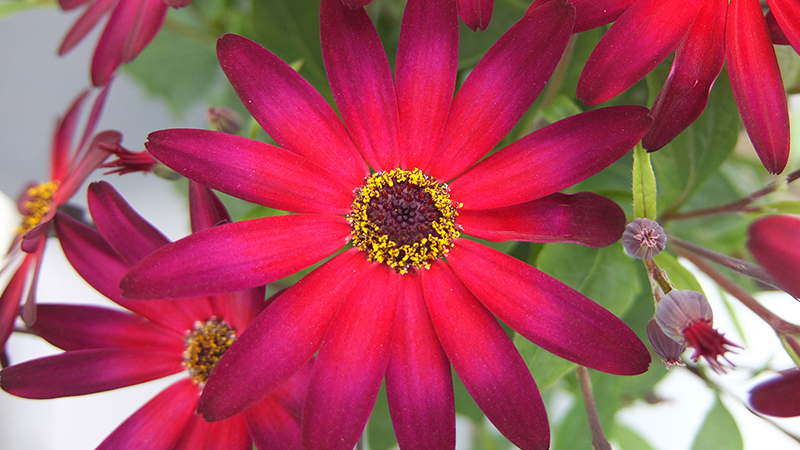Choosing the Right Greenhouse Heating Solutions and Maintenance Practices

Photo: Modine Manufacturing
When it comes to maintaining a hospitable environment, greenhouse growers get the best of both worlds – they’re able to harness natural sunlight, yet still protect their plants from the elements. Even with this effective combination, year-round growing still demands keeping an eye toward efficiency, especially when it comes to climate control within greenhouses.
While greenhouses provide an environment for plants to thrive, their inherent moisture content can have negative effects on the HVAC equipment serving the space. Preventing corrosion and deterioration will depend largely on choosing the right heating solution for the greenhouse. Consistent exposure to moisture will reduce the functional lifespan of most heating systems, so choosing the right solutions will have a major impact on how successful your growing season is and how long your investment will last.
Choosing the Right Heating Solution
Corrosion is a heating system’s worst enemy. Depending on the environment, a heating unit without proper coating will start developing corrosion in as little as a few weeks after installation.
When you’re looking for heating solutions for your greenhouse, consider using unit heaters. These heaters are ideal for commercial greenhouses because they’re compact and can be mounted on the ceiling, saving space on the floor for crops and equipment. Plus, they offer a steady heat source that keeps crops at the right temperature.
Because some regions may require heating solutions year-round, high-efficiency unit heaters are a great option because they are cost-effective, and they provide the needed warmth. As an example, Modine’s Effinity High-Efficiency Commercial Gas-Fired Unit Heater operates at up to 97% efficiency, because it couples the secondary heat exchanger technology with a tubular primary heat exchanger design. This unit also reduces CO2 emissions by venting fumes outside the greenhouse. Plus, it has energy-saving controls that adjust gas usage based on temperature changes, further cutting utility costs. Overall, this type of unit heater not only ensures proper heating but also helps keep expenses down for greenhouse growers.
The Importance of Maintenance in Greenhouse Heating Solutions
Even with the right equipment to withstand corrosive environments, it’s important to keep preventative maintenance top of mind. Neglecting proper upkeep of heating equipment can lead to increased strain on the system, potentially resulting in diminished heating effectiveness.
Overall maintenance also has a positive effect on efficiency. It is important for commercial greenhouses to maintain regular heat during the colder months to ensure great growing conditions. If the unit heater isn’t properly maintained, it could result in losses in crops. Regular preventative maintenance not only extends the life of the unit, but it will also improve efficiency due to the unit operating at maximum capacity.
Inadequate maintenance raises the likelihood of malfunctions or complete breakdowns, which could result in a loss of crops. As a best practice, establishing routine maintenance by a licensed technician will ensure unit efficiency thus contributing to smooth, uninterrupted greenhouse operations.
To optimize performance, technicians will provide a comprehensive review specific to greenhouse environments. These services include detailed visual assessments to identify abnormalities such as rust or corrosion around vent pipes, as well as thorough examinations of the unit’s components including fans, wiring, gas pipes, and venting systems for signs of wear and tear.
Technicians also ensure the smooth rotation of motor shafts and the unimpeded flow of venting systems while checking burner tubes for indications of infestation from insects or rodents. Cleaning heat exchangers and burners as necessary is imperative for maintaining functionality, along with verifying the thermostat is operating properly and inspecting associated wiring.
A technician will thoroughly inspect and adjust manifold gas pressure, carefully examining gas connections for optimal performance.
Lastly, for high-efficiency units, a technician will check the condensate and ensure there is no leakage, which could be a sign of improper unit operation or vent configuration.
Ensure Uninterrupted Heating Solutions All Year Long
To enhance your greenhouse’s efficiency, having both an effective heating system and a proactive maintenance routine are essential to ensure the longevity of your heating system. High-efficiency unit heaters are a great option, as they not only lower CO2 emissions but also reduce energy expenses. Additionally, applying protective coatings to coils helps units function smoothly while maintaining efficiency. By taking these steps, you can significantly improve the efficiency of your greenhouse operations.









